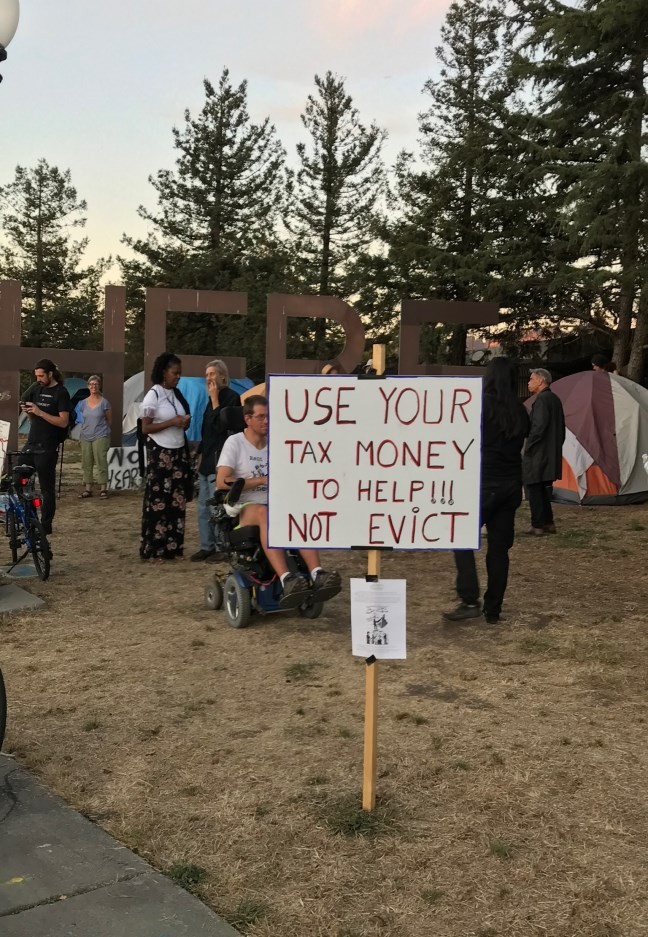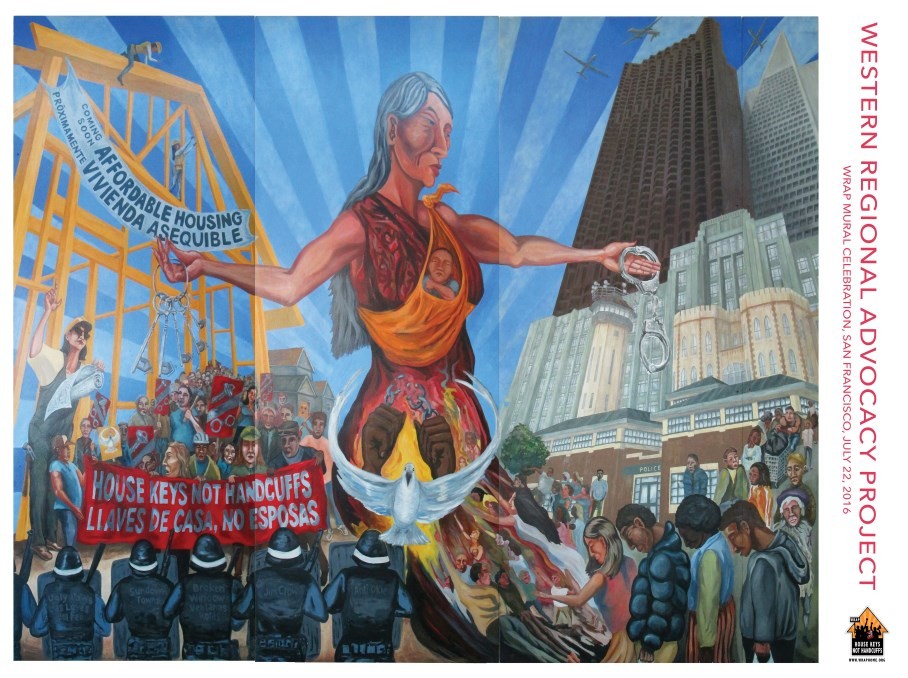BERKELEY, CA – The City of Berkeley Department of Health, Housing, and Community Services (HHCS) recently submitted an Affordable Housing Preference Policy (HPP) document to City Council that is focused on both preventing displacement in Berkeley and responding to displacement that has already occurred through recent or historical injustices. While the HPP is an important step towards housing equity, implementation remains an open question with unknown timeline — opportunities to implement policies developed from HPP preferences will be shaped by staffing levels, Fair Housing law, approvals by other government funding sponsors, and City Council’s direction.

Prioritizing Racism-Rooted Displacement
For several years, CBOs in Berkeley had called for a Housing Preference Policy to help address gentrification and displacement in Berkeley, particularly the dramatic loss of the African American residents in South Berkeley. Specific challenges experienced by low income residents and residents of color in the last several decades include:
- RACIAL DISPLACE MENT: From 1990-2018 Berkeley lost 49% of its Black population while other racial groups all grew slightly. In addition, the steady growth of homelessness (up 10% on average every two years between 20062019) has disproportionately impacted Black people, who are 65% of service users yet less than 8% of the general population. The most common response to the question of why homeless people chose to sleep in Berkeley was that they grew up in Berkeley.
- HISTORICAL HARM TO COMMUNITIES OF COLOR: Racism-based redlining in Berkeley combined with BART’s purchase of homes in communities of color through eminent domain in order to construct BART stations have created persistent patterns of disinvestment that enable gentrification. Approximately 83% of today’s gentrifying areas in the East Bay were rated as “hazardous” (red) or “definitely declining” (yellow) by the government agency that introduced redlining: these policies limited homeownership and housing stability in these Berkeley neighborhoods—with majority residents of color. Individuals who lose their homes due to BART construction lost their opportunities for intergenerational wealth-building.
- HOUSING INSECURITY: And compounding historical racist displacement is the still unresolved crisis of housing affordability. Approximately 49% of low income renters in Berkeley spent more than half their income on rent, putting them at high risk of homelessness, i.e. during economic downturns, job loss, and unforeseen health crises (such as the pandemic).
The Housing Preference Policy (HPP) is intended to address both current and historical displacement—it will apply to units created by the City’s Below Market Rate (BMR) and Housing Trust Fund (HTF) programs. Development of the HPP was undertaken by the Department of Health, Housing, and Community Services (HHCS) in partnership with community-based organizations. This work was made possible with a Partnership for the Bay’s Future (PBF) Challenge Grant.
Key areas the HPP recommends for detailed policy development include:
- Displacement due to BART construction (displaced individuals or descendants): Acknowledging the harm of BART construction displacement and its impact on generational wealth-building, with the opportunity to return to the community with stable housing.
- Displacement due to foreclosure since 2005: Acknowledging the lack of support offered during the foreclosure crisis (which disproportionately impacted communities of color), with support for displaced residents to return.
- Displacement due to eviction within last 7 years: Support for renters facing challenges in finding new housing due to an eviction (which disproportionately impact Black women), which stays on a record for seven years.
- Displacement or housing insecurity for families with children: Support for families being displaced, as children are most impacted by displacement, with impacts on education, child care, and peer networks.
Homelessness or risk of homelessness:
Those directly affected by redlined areas, and those with parents or grandparents directly affected.
Berkeley’s Housing Advisory Commission (HAC) voted on October 6, 2022 to adopt a Housing Preference Policy, recommending action to prioritize new affordable housing for the groups identified above. The HHCS requested City Council feedback on which preferences to move forward with for policy development and adoption.
To help Council make this determination, HHCS staff identified several specific considerations related to policy development and implementation:
Displacement due to BART construction: How to collect a complete and accurate list of those displaced; whether to focus on those displaced through eminent domain or a broader qualification scope.
Displacement due to eviction: Need to identify eviction causes that qualify for this preference (owner move-in, demolition, nonpayment of rent, other causes).
Homelessness/risk of homelessness: Review the use of existing City housing resources available to this population; review eligibility criteria and homelessness definitions; how to fund subsidies that are required to maintain units for extremely low income (ELI) residents; how to avoid screening requirements from being overly restrictive; how to demonstrate local ties to establish current or former Berkeley residency.
Fair Housing Analysis: Fair Housing law requires disparate impact analysis (DIA) for preferences before a preference policy can be implemented on Housing Trust Fund projects. This analysis also determines what percentage of units can receive preferences without creating disparate impacts on projected classes. Staff issued an RFP for Fair Housing analysis in August 2022.
Limiting preferences: The proposed preferences vary in scope and reach—most jurisdictions surveyed implement 3-4 preferences.
Sequencing of rollout: Disparate Impact Analysis is not required for BMR units, so implementing policy on BMR units can be rolled out more quickly.
Outreach: Community partners will be needed to conduct outreach and education; staff will issue an RFP to identify a partner(s).
Reporting: Need to identify frequency and content of reporting to ensure that anti displacement goals are being met.
ALIGNMENT WITH STATE GOALS. In September 2022, SB 649 was adopted which established state policy stating that lower-income individuals residing in neighborhoods and communities experiencing significant displacement need access to housing that is affordable and assists in avoiding displacement, which directly aligns with HPP goals.
A Housing Preference Policy also supports the state’s environmental goals: displacement can lead to long commutes as people continue to return to communities of origin for work, school, faith institutions, health care, or social networks. A Housing Preference Policy helps to reduce greenhouse gas emissions associated with longer commutes by reducing or reversing the displacement of those with ties to Berkeley.

BACKGROUND. The development of the HPP began in 2020 with the establishment of a community-driven process to design the policy, led by outreach and data collection partners East Bay Community Law Center (EBCLC) and Healthy Black Families (HBF). Outreach and engagement was conducted through community surveys, HBF-led outreach in local neighborhoods, and a Community Leaders Group comprised of representatives from local CBOs and community groups.
Specific data points that informed the development of the Affordable Housing Preference Policy included (more details provided in HPP attachments):
- Community survey conducted by Healthy Black Families: 93 responses; 70% self-identified as Black, 18% as white, 3% as Latinx, 3% other, 3% Native American/Alaskan, 2% Asian/Indian/Pacific Islander; 65% identified as renters, 25% as homeowners, 4% as living with family, 4% other, 2% homeless.
- Berkeley Considers survey: 549 respondents; 67% self-identified as white, 7% Black, 3% Latinx, 3% mixed race, 3% Asian/Pacific Islander, 15% declined to state; 59% identified as homeowners, 31% as renters, 4% living with family/friends, 1% unhoused, 5% other.
Review of preference policies from other jurisdictions, both in California and nationwide, including East Palo Alto, Oakland, Redwood City, San Francisco, San Jose, Santa Monica, Austin TX, Cambridge MA, New York NY, Portland OR.
